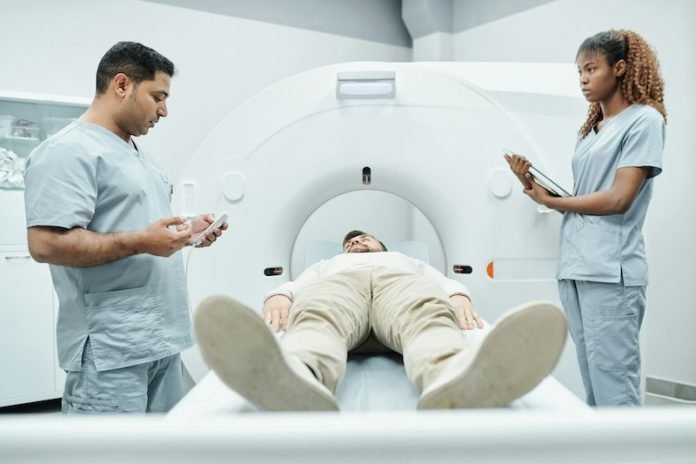
In a new study published in Neurology Clinical Practice, researchers have explored the capabilities of artificial intelligence, specifically the large language model GPT-4, in the field of neurology.
This study focused on using AI to analyze health histories and neurologic examinations to accurately locate brain lesions caused by strokes.
Strokes can lead to long-term disabilities and even death, making it crucial to understand where in the brain they occur to determine the best course of treatment and prognosis.
Traditionally, locating a stroke’s impact involves neurologic exams that assess symptoms, thinking, and memory, along with brain scans.
However, not everyone has access to these critical resources.
Recognizing this gap, Dr. Jung-Hyun Lee from the State University of New York (SUNY) Downstate Health Sciences University and a member of the American Academy of Neurology, aimed to discover whether GPT-4 could fill this void.
By analyzing text from 46 published cases of stroke patients, including their health histories and neurologic exams, the researchers tasked GPT-4 with determining the presence, side, and specific brain region of lesions.
Impressively, GPT-4 demonstrated a high level of accuracy, especially in identifying the side of the brain and the brain region affected, excluding the cerebellum and spinal cord lesions.
GPT-4’s performance showed a sensitivity of 74% and a specificity of 87% for locating which side of the brain a lesion was on. Its ability to pinpoint the exact brain region had even higher sensitivity and specificity, 85% and 94% respectively.
Moreover, the AI model maintained consistency in its assessments across multiple evaluations for the majority of cases, showcasing its potential reliability.
Despite these promising results, GPT-4’s accuracy stands at 41% when synthesizing its responses across all categories and evaluations, indicating that it is not yet suitable for clinical application.
Nonetheless, this study highlights the potential of large language models like GPT-4 to revolutionize stroke care.
By assisting in the diagnosis and management of strokes, especially in underserved regions with limited access to neurological expertise and equipment, AI could significantly reduce healthcare disparities.
Dr. Lee emphasizes the importance of further research and development in this area, noting the potential for AI to function across different languages, further broadening its applicability and impact.
The study also acknowledges a crucial limitation: the effectiveness of AI in this context is heavily dependent on the quality and detail of the input data.
This underscores the need for comprehensive health histories and thorough neurologic exams for accurate AI-assisted diagnoses.
This exploration into the use of AI in stroke diagnosis and management opens new avenues for enhancing healthcare accessibility and quality, particularly in regions where medical resources are scarce.
As technology and healthcare continue to intersect, the future of medical diagnostics and treatment looks increasingly promising, with AI poised to play a pivotal role.
If you care about stroke, please read studies about how to eat to prevent stroke, and diets high in flavonoids could help reduce stroke risk.
For more information about health, please see recent studies about how Mediterranean diet could protect your brain health, and wild blueberries can benefit your heart and brain.
The research findings can be found in Neurology Clinical Practice.
Copyright © 2024 Knowridge Science Report. All rights reserved.



